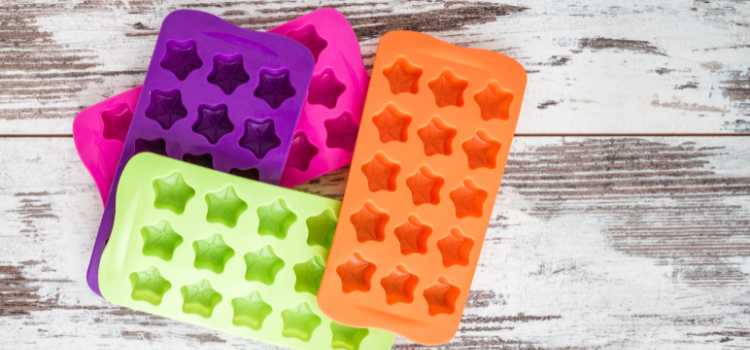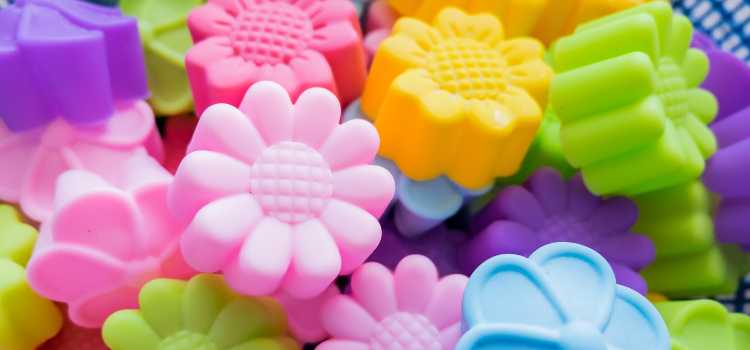As an Amazon Associate, I earn from qualifying purchases

Silicone molds have become a staple in the baking world, captivating both amateur and professional bakers with their versatility and convenience. Unlike traditional metal or glass bakeware, silicone molds offer unique features that make baking not only easier but also more creative. Their vibrant colors and flexible nature can transform a simple baking task into an exciting adventure.
As more people explore baking at home, the question often arises: Can these silicone molds really go in the oven? This article delves into the properties, safety, and benefits of using silicone molds, providing comprehensive insights for anyone curious about integrating them into their culinary repertoire.
Properties of Silicone for Oven Use
- Exceptional Heat Resistance: Silicone molds can withstand temperatures from -40 to 446 degrees Fahrenheit (-40 to 230 degrees Celsius), allowing them to be used in both freezers and ovens. This versatility makes them ideal for recipes that require chilling and baking.
- Non-Stick Surface: The inherent non-stick quality of silicone simplifies the baking process, enabling baked goods to release effortlessly. This reduces the need for extra greasing or flouring, making clean-up easier.
- Flexibility: Silicone molds are highly flexible, allowing you to bend and twist them for easy removal of your baked creations without the risk of breaking.
- Durability: Unlike metal pans that can rust or glass that may shatter, silicone molds are resilient against physical damage. They can be folded or compressed for storage and will return to their original shape without warping.
- Space-Saving Design: The ability to fold and compress silicone molds not only saves storage space but also ensures they remain a long-lasting addition to your baking tools.
Safety Considerations
- Temperature Limits: Always adhere to the temperature limits set by the manufacturer. Exceeding these limits can compromise the mold’s integrity, risking melting or deformation.
- Food-Grade Quality: Choose silicone molds that are labeled as food-grade and free from harmful chemicals like BPA. High-quality molds will not emit odors or leach chemicals into your food, ensuring safe meal preparation.
- Proper Usage: To maintain safety and integrity, avoid placing silicone molds directly on oven elements or exposing them to open flames. This can damage the material.
- Stability and Heat Distribution: For better stability and even heat distribution, place silicone molds on a baking sheet. This practice simplifies the process of transferring molds in and out of the oven.
Benefits of Using Silicone Molds in Baking

Silicone molds bring numerous advantages to the baking table, enhancing both functionality and creativity. One of the most significant benefits is their ability to distribute heat evenly. This uniform heat distribution ensures that your baked goods cook consistently, minimizing the risk of unevenly baked treats.
The easy release feature of silicone molds cannot be overstated. With their non-stick nature, you can say goodbye to the frustration of scraping out stubborn cakes or muffins. This benefit not only saves time but also preserves the aesthetic of your baked goods, making them look as good as they taste.
Silicone molds come in an array of shapes and sizes, opening up a world of creative possibilities. Whether you’re crafting intricate cake designs, experimenting with unique cupcake shapes, or making themed ice cubes, silicone molds offer endless opportunities to showcase your culinary artistry.
Tips for Selecting and Caring for Silicone Molds
When choosing silicone molds, prioritize quality to ensure the best results. Look for molds with a good thickness and reinforced edges, as these features enhance stability and longevity. A high-quality silicone mold will maintain its shape and performance over time, providing a reliable tool for your baking endeavors.
Caring for silicone molds is straightforward, but it’s important to follow a few guidelines to extend their lifespan. Most silicone molds are dishwasher safe, but hand washing with mild soap and warm water is often recommended to prevent any potential damage from harsh dishwasher detergents. After washing, ensure the molds are thoroughly dried before storing them to avoid any unwanted odors or mold growth.
For storage, keep silicone molds in a cool, dry place. Their flexibility allows them to be easily stacked or folded without risk of damage, but it’s wise to avoid heavy pressure that could cause permanent creasing.
Conclusion
Silicone molds are undoubtedly a valuable asset in the kitchen, offering a blend of practicality and innovation. Their suitability for oven use, coupled with their numerous benefits, makes them an attractive choice for bakers seeking to enhance their culinary creations.
By following safety guidelines and proper care instructions, you can enjoy the full advantages of silicone molds, turning every baking session into a delightful experience. So go ahead, explore the vibrant world of silicone molds, and let your baking creativity soar.
FAQ
Will a silicone mold melt in the oven?
Silicone molds are designed to withstand oven temperatures up to approximately 446°F (230°C). As long as the mold is used within the manufacturer’s recommended temperature limits, it should not melt. Always check the product guidelines to avoid exceeding these limits and ensure safe use.
Are silicone molds safe in the oven?
Yes, silicone molds are safe for oven use when they are food-grade and adhere to temperature guidelines. They do not emit harmful chemicals or odors at typical baking temperatures. Ensure the silicone is BPA-free and follow manufacturer instructions to maintain safety and avoid damage.
How can you tell if silicone is oven safe?
To determine if silicone is oven safe, check the packaging or product description for temperature ratings and food-grade certification. Oven-safe silicone will specify heat resistance up to 446°F (230°C) and will typically be labeled BPA-free. Ensure it meets these criteria before oven use.
How to put silicone mold in the oven?
Place the silicone mold on a baking sheet for stability and easy handling before putting it in the oven. Ensure the mold is clean and dry. Preheat the oven according to your recipe, then carefully transfer the baking sheet with the mold into the oven.
As an Amazon Associate, I earn from qualifying purchases